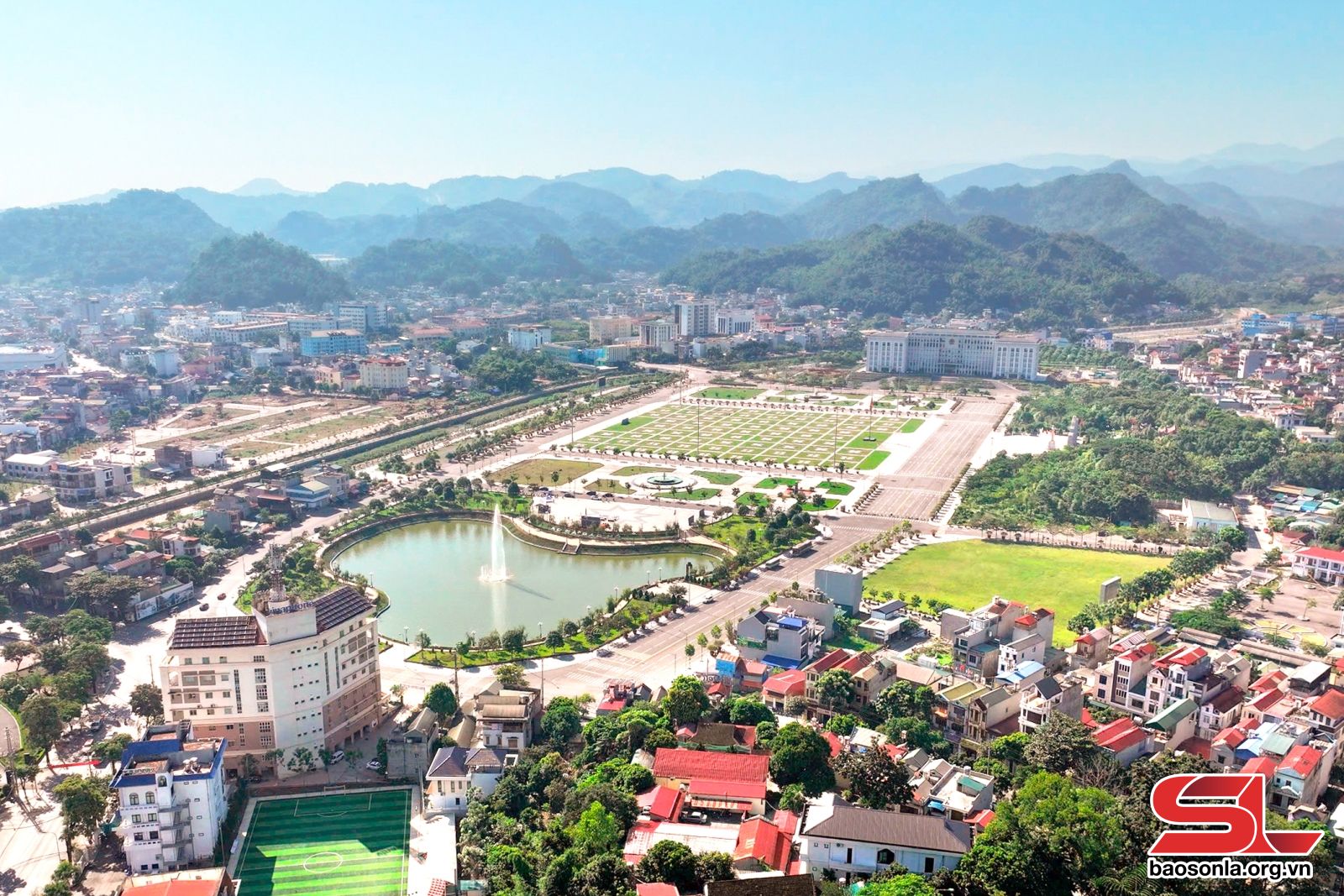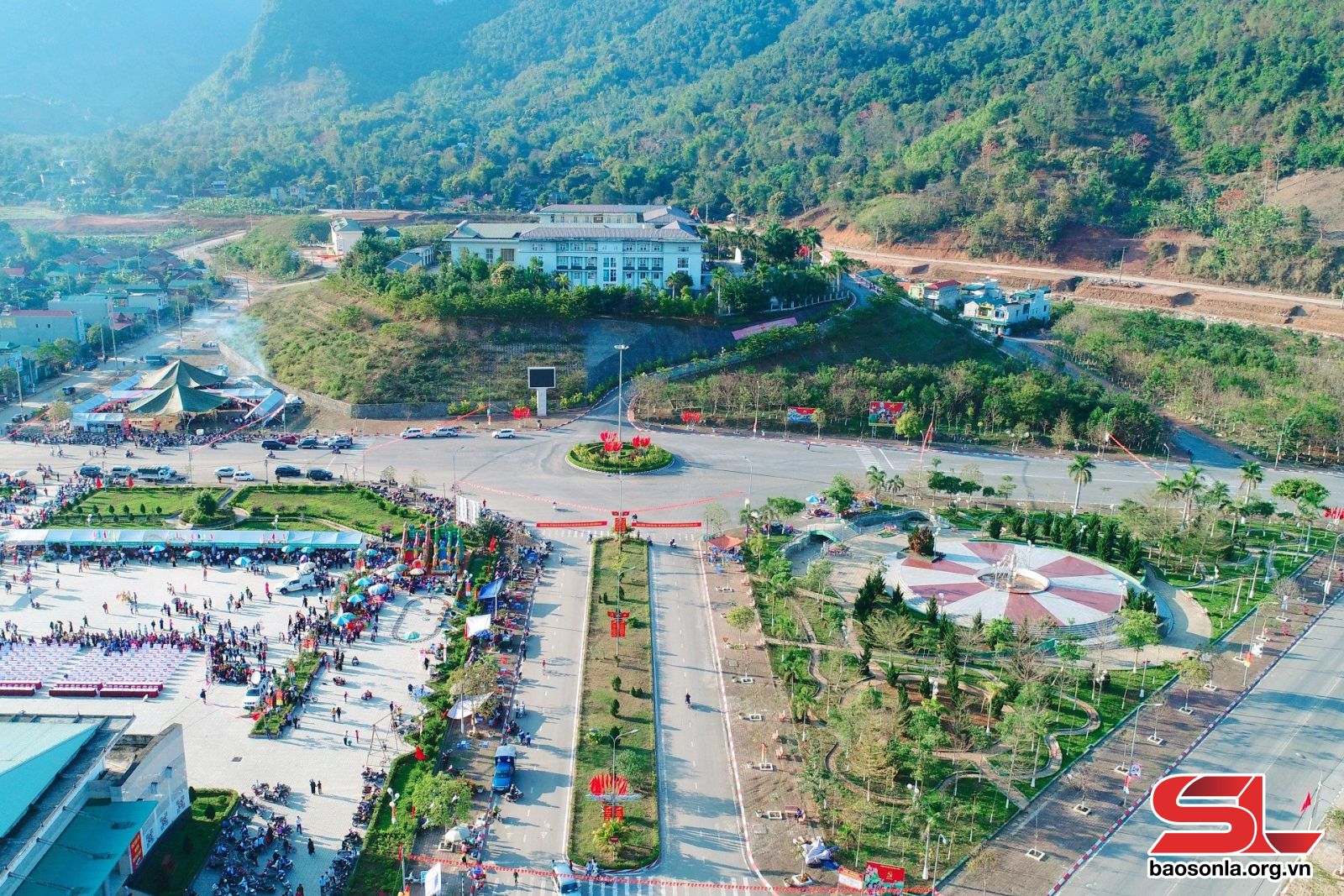
Planning plays a key role in paving the way for effective urban development and management. Planning schemes in Son La province have been prioritised to ensure consistency and alignment across all levels - from the master plan to sub-area and detailed plans.
Ha Ngoc Chung, Director of the provincial Department of Construction, said the department is working with district and city People’s Committees to review, devise, and adjust regional and functional zone plans. The goal is to attract investment and leverage the province's potential and strengths in nature, culture, agriculture, tourism, agro-processing industries, and high-tech application. The work is expected to help improve planning coverage and lay the groundwork for effective urban development, particularly in managing construction and architecture in the areas gearing towards the fifth-tier urban status and higher.
As the economic and political centre of the province, Son La city has undergone rapid and significant transformation. Urbanisation has taken place swiftly, with concerted infrastructure projects, creating highlights for the city's urban landscape. Notable among them are the Tay Bac (Northwest) Square, new urban areas along the Nam La Stream, and Vo Nguyen Giap Road. Additionally, cultural landmarks have been carefully preserved and restored, such as the Son La Prison national special relic, the King Le Thai Tong Temple, and the Truc Lam Rang Tech Pagoda, making the city both modern and traditional.
The Department of Construction has collaborated with various agencies in reviewing and adjusting four urban areas, namely Moc Chau, Phu Yen town in Phu Yen district, Quynh Nhai town in the district of the same name, and Yen Chau town in Yen Chau district. This brings the total number of urban areas reviewed and adjusted in the 2021-2025 period to eight. Currently, the detailed planning coverage in the province stands at approximately 33%, with Sơn La city reaching around 40%.
The all-level planning schemes adhere to regulations and are feasible, aligning with local socio-economic development orientations. This is evident in planning schemes in districts, such as those for Van Ho and Moc Chau urban areas, which include detailed subzones for trade-tourism, high-tech agricultural production, ecological areas, and other services. Meanwhile, the urban planning for Quynh Nhai town is associated with tourism development around the reservoir region. The Quynh Nhai cultural and spiritual tourism complex is nearing completion, connecting with the proposed town and other reservoir-based tourism sites.

Alongside planning efforts, construction and architecture management have been prioritised, helping push ahead with urban development and promote the real estate sector. Currently, 16 commercial housing and urban area projects are underway in the province, primarily in Son La city, and Moc Chau and Mai Son districts. Additionally, Moc Chau and Van Ho districts are home to many residential, resort, tourism, service, and entertainment real estate projects.
The projects match socio-economic growth and potential of each locality, contributing to attracting investment in infrastructure and other sectors, and building a modern, civilized province of rich culture.


















.jpg)




You have 500/500 characters left
Please enter 5 or more characters!!!